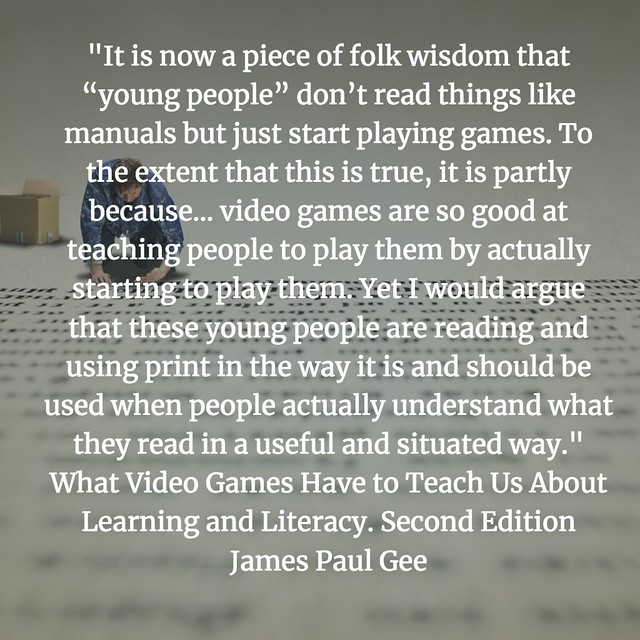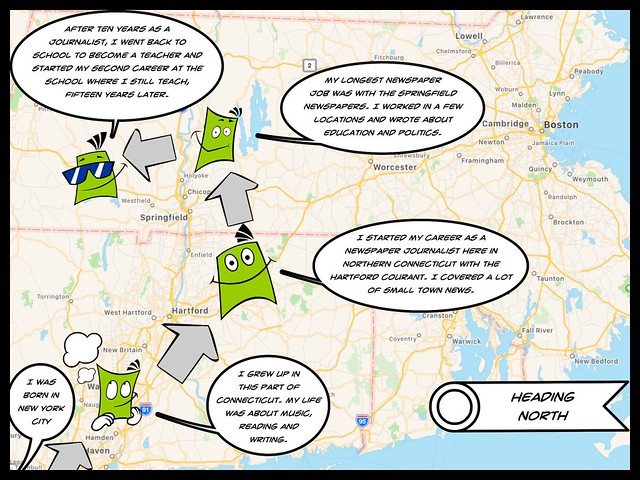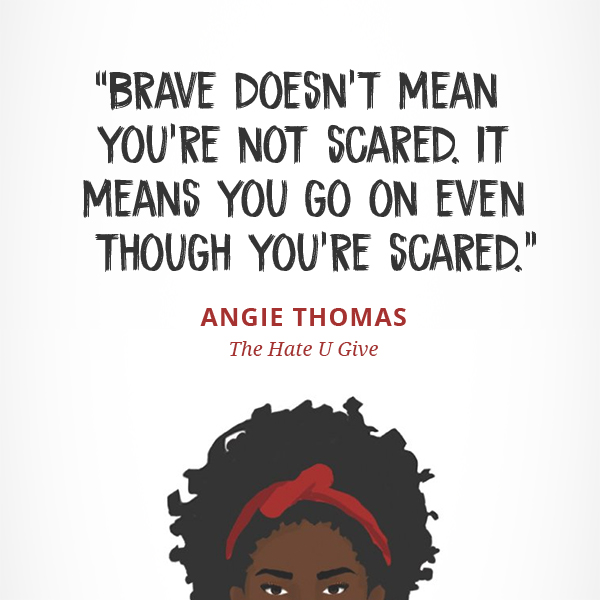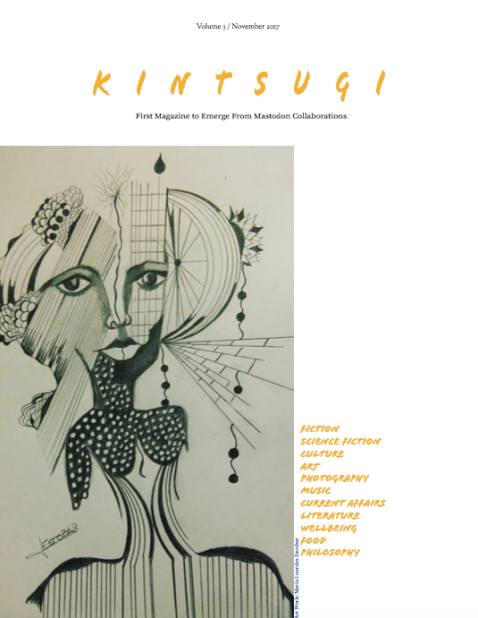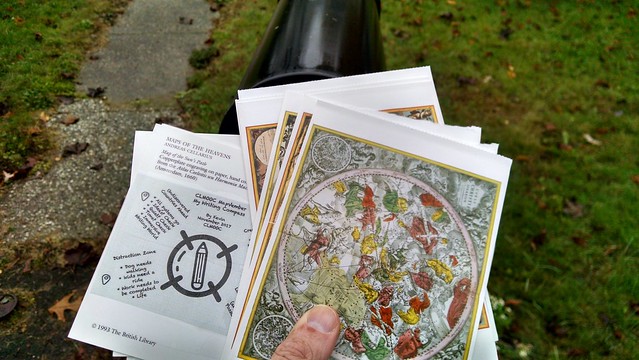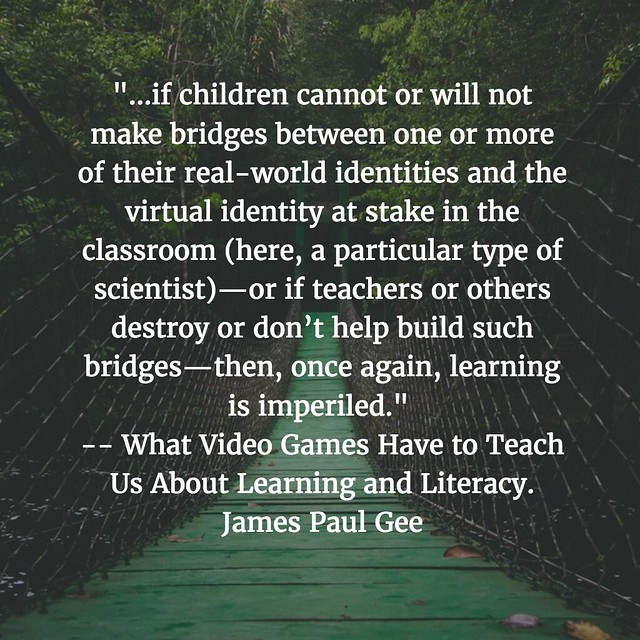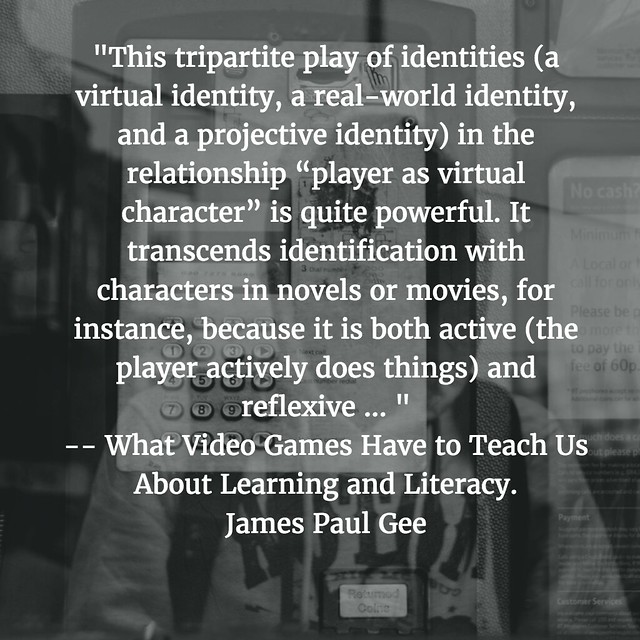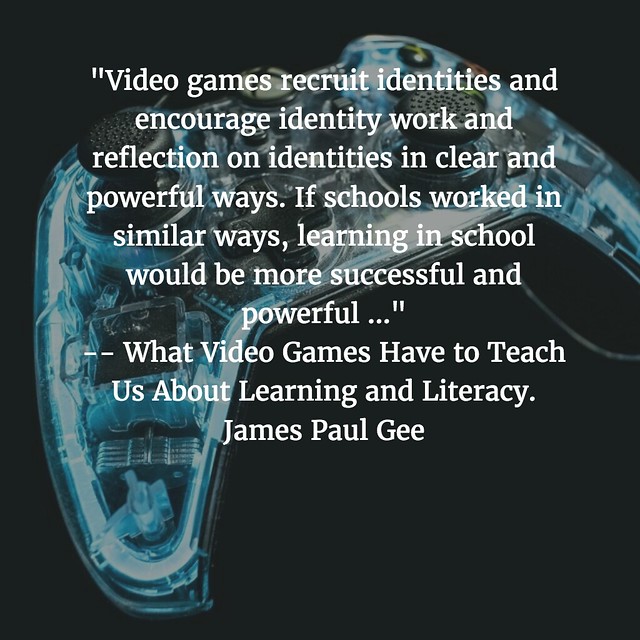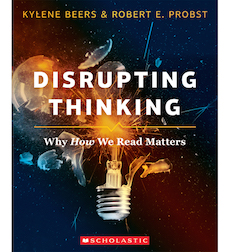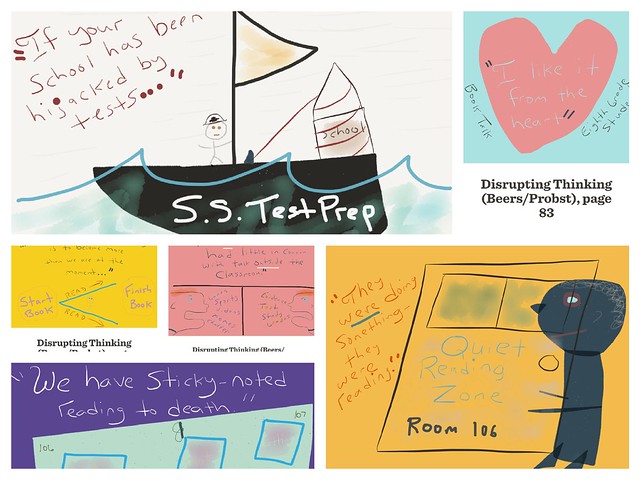I’m off on a new reading adventure, diving into James Paul Gee’s book — What Video Games Have to Teach Us about Learning and Literacy — with discussion prompts by my friend, Keegan.
In many ways, this chapter’s exploration of story and text is why I wanted to read this book in the first place. I am intrigued by how video games may or may not push our understanding of story into new directions, and how “texts” might play a role in the player’s experiences and learning.
 There is certainly an immersive quality to media-rich storytelling, and video games — if done well — pull you into that story in a rather disorientating way. While Gee explains how many games give you teaser introductions as a way to “teach” game mechanics for the user, most successful games weave the design of play in the design of narrative in ways that are intricate and finely woven. As Gee notes, sometimes the player doesn’t realize that they are being surrounded by story.
There is certainly an immersive quality to media-rich storytelling, and video games — if done well — pull you into that story in a rather disorientating way. While Gee explains how many games give you teaser introductions as a way to “teach” game mechanics for the user, most successful games weave the design of play in the design of narrative in ways that are intricate and finely woven. As Gee notes, sometimes the player doesn’t realize that they are being surrounded by story.
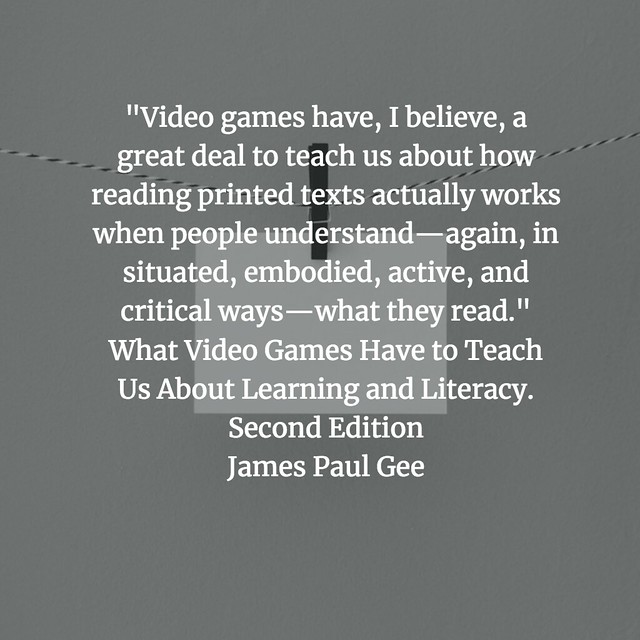 Here, Gee is analyzing in detail how we “read” video games by playing video games, and what is going on with the learning process in doing so. He argued that games are, in fact, rich in various texts, some more visible than others.
Here, Gee is analyzing in detail how we “read” video games by playing video games, and what is going on with the learning process in doing so. He argued that games are, in fact, rich in various texts, some more visible than others.
 A section in the book about the written or digital instructions that come with games (which may be less and less part of the gaming experience now) are often part of the “semiotic language” of the game, in that the vocabulary and language of instructions are in tune with the mechanics of the game design system. Reading them in isolation is disorientating. Picking and choosing parts to read, when you need them — as gamers do — surfaces a language all of its own, with transactional values.
A section in the book about the written or digital instructions that come with games (which may be less and less part of the gaming experience now) are often part of the “semiotic language” of the game, in that the vocabulary and language of instructions are in tune with the mechanics of the game design system. Reading them in isolation is disorientating. Picking and choosing parts to read, when you need them — as gamers do — surfaces a language all of its own, with transactional values.
The real “reading” happens with the “playing” and that moment when the story and the game merge together seamlessly is the reason why players play these kinds of games (with a narrative arc).
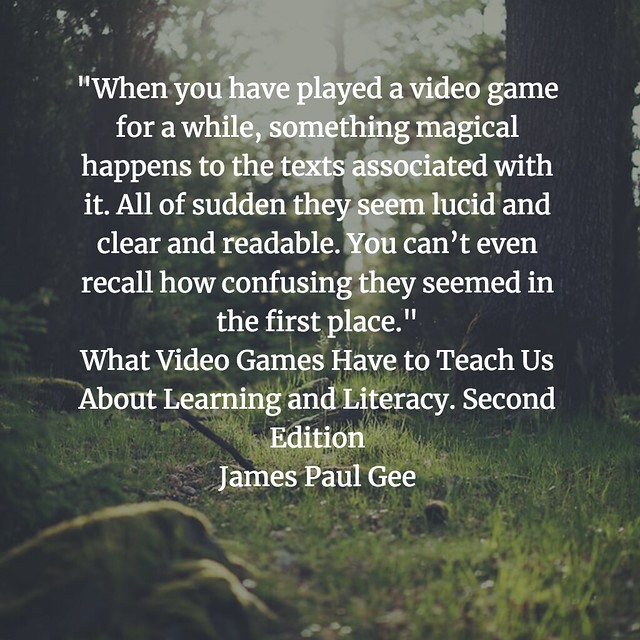 The player, and the choices they make along the way, act in partnership with the writer/game designer, so that agency for character development and plot arcs are done in mutual agreement, even if that thread between writer (game designer) and reader (game player) is not always evident.
The player, and the choices they make along the way, act in partnership with the writer/game designer, so that agency for character development and plot arcs are done in mutual agreement, even if that thread between writer (game designer) and reader (game player) is not always evident.
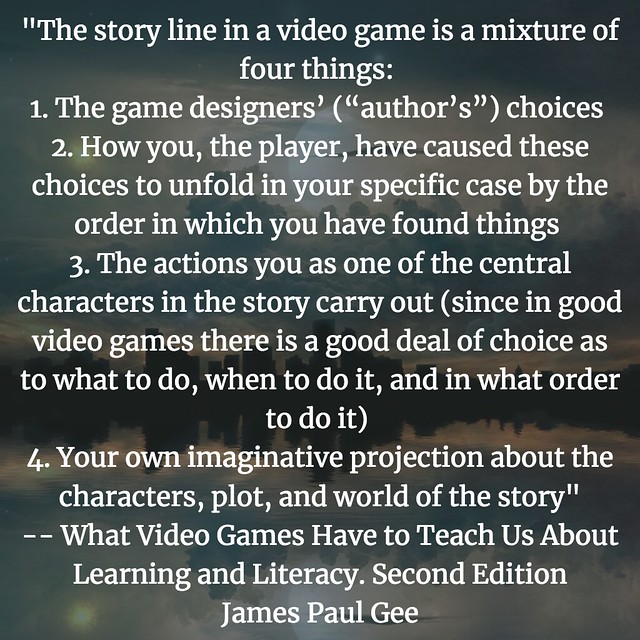 What I appreciate here is that it has me thinking again of what writing is, and how writing changes with digital media like video games. And therefore, how can I as a teacher help my young students tap into that immersive element to bring new ways to write?
What I appreciate here is that it has me thinking again of what writing is, and how writing changes with digital media like video games. And therefore, how can I as a teacher help my young students tap into that immersive element to bring new ways to write?
Peace (game on),
Kevin

